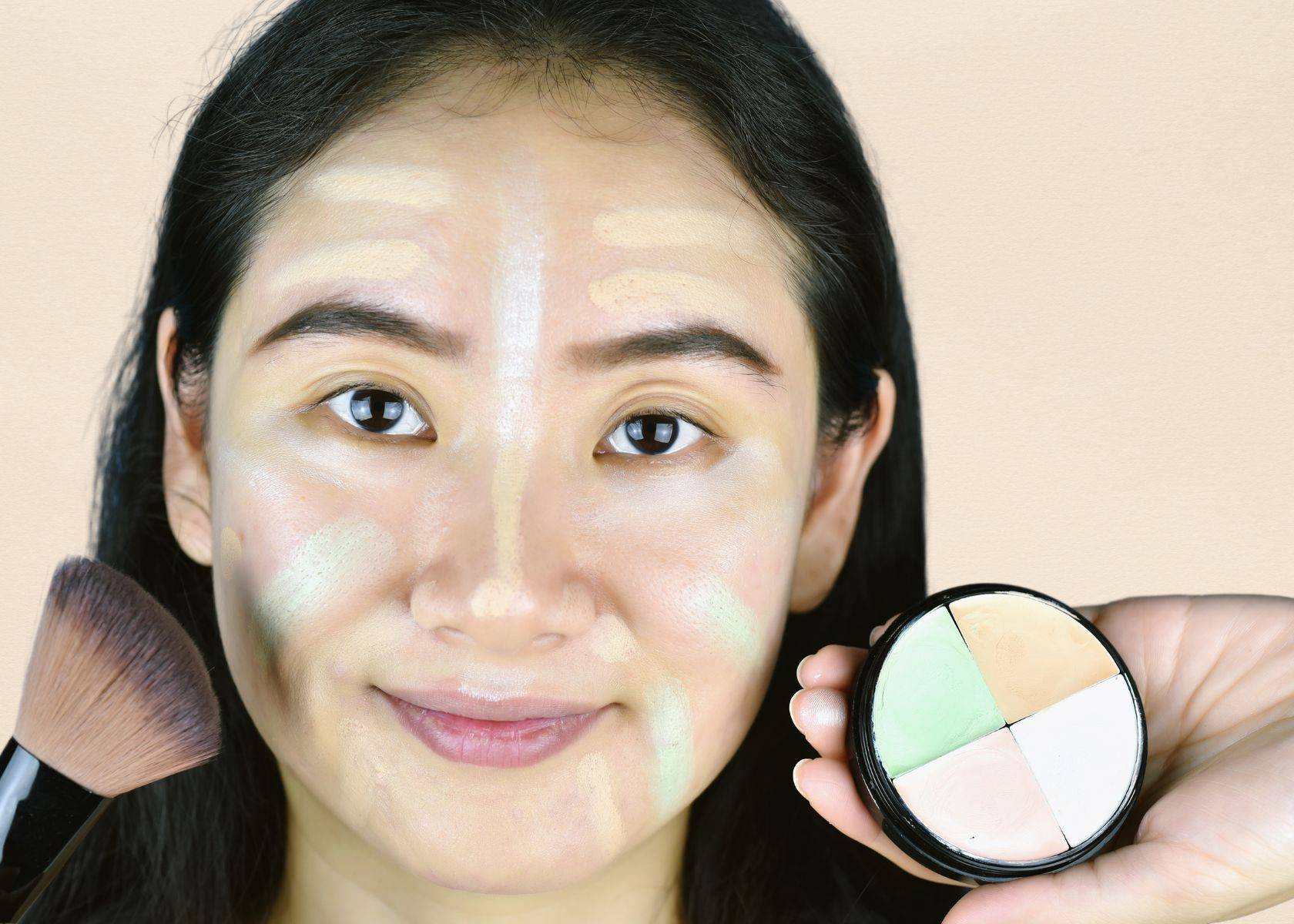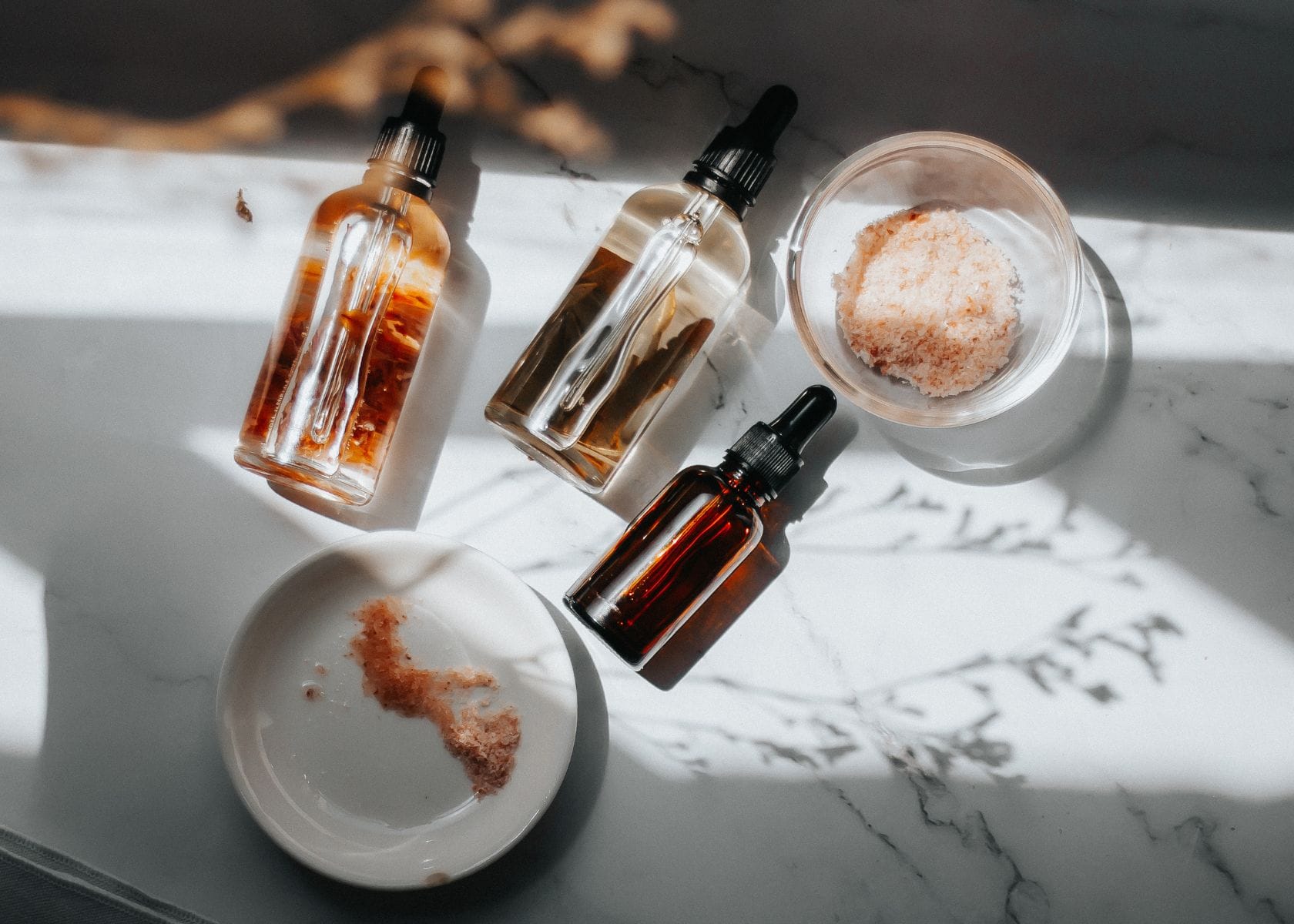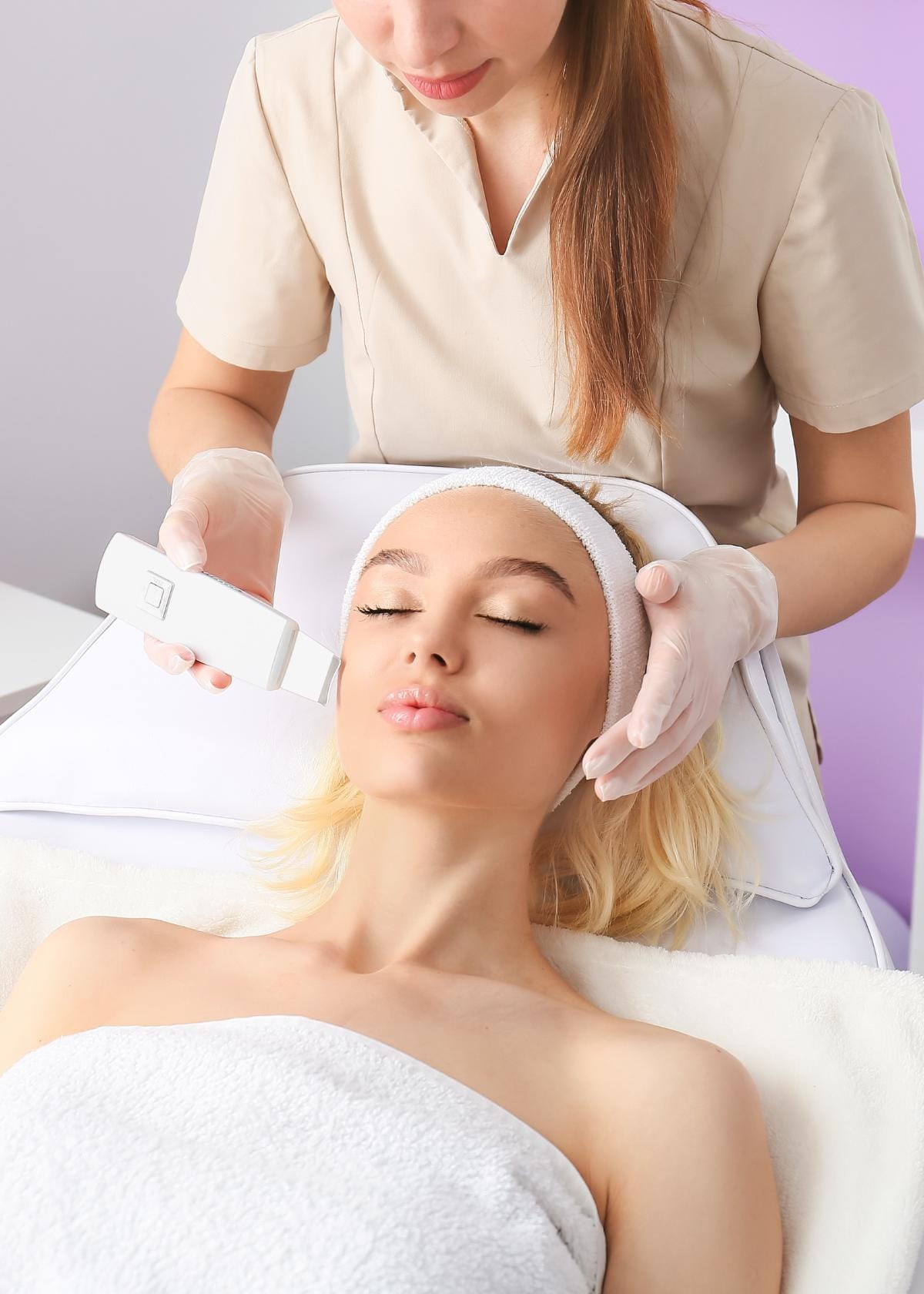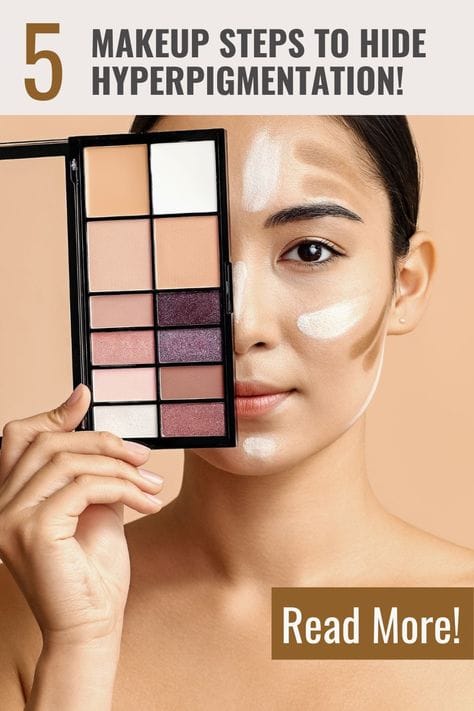Hyperpigmentation can feel like a stubborn gatecrasher on your skin's party – uninvited and persistent. You're not alone if you've tried covering up those dark spots, uneven skin tone, or melasma with little to no success.
It's a common struggle that many faces in the quest for an even complexion, one that can take a toll on one’s confidence.
One important fact to note is that while makeup won't cure hyperpigmentation, the right techniques and products can effectively conceal it, boosting your self-esteem as you work on long-term treatment options.
This blog post aims to be your ally by providing simple yet impactful methods for camouflaging hyperpigmented areas with makeup and other strategies. Plus, we've got insights into doing so without cosmetics for those who prefer a more natural approach.
Ready to tackle those pesky spots head-on? Keep reading!
Key Takeaways
- To effectively cover hyperpigmentation, start by using a color corrector to neutralize dark spots or dark circles before applying foundation and concealer.
- Choose makeup products with high-performance pigments and match them to your skin's undertones for the most natural and seamless coverage of hyperpigmented areas.
- Find out your skin type, if you have oily skin, go with an oil-free moisturizer first.
- Apply makeup in thin layers, building up coverage gradually, and use quality tools like brushes or sponges for even application without caking.
- Set your concealer and foundation with translucent powder to ensure long-lasting wear that covers hyperpigmentation throughout the day.
- For those who prefer not to use makeup, protect their skin from the sun, use lightening skincare ingredients such as vitamin C, and consider professional dermatological treatments.
How to Cover Hyperpigmentation with Makeup

To effectively cover hyperpigmentation with makeup, it's important to understand color correcting, knowing your natural skin tone and undertones, using intense pigments, applying the right amount of product, and using the right tools. These techniques will help you achieve a flawless finish and even out your skin tone.
Color correcting
Color correcting plays a crucial role in hiding hyperpigmentation and achieving an even skin tone. Start by choosing the right shade of color corrector to neutralize discoloration.
For example, orange or peach tones work wonders on dark spots for medium to deep complexions, while lighter skin benefits from yellow or lavender hues. Apply the corrector on areas with hyperpigmentation before layering your foundation, this would considerably lighten dark spots.
Use a light hand and build coverage gradually, focusing only where you need it most. A smooth application often starts with dabbing a small amount using a precise concealer brush or sponge, blending it outwards for seamless integration with the surrounding skin.
This targeted approach ensures that you don't overapply product elsewhere, keeping your look as natural as possible.
With high-performance pigment products recommended for such issues, be sure to pick concealers and foundations designed for covering uneven skin tone effectively. These specialized formulas enhance your color-correcting efforts without making you look cakey or overdone.
Carefully set everything in place with a setting powder that matches your overall complexion to ensure long-lasting wear throughout the day.
Knowing your undertones
Understanding your skin's undertones is crucial for selecting makeup to cover hyperpigmentation effectively. Undertones are the colors beneath the surface of your skin and can be warm, cool, or neutral.
Warm undertones often have a yellowish or peachy glow, while cool ones hint at blue or pink. Those with neutral undertones will find their skin has a mix of these colors without one dominating.
Choosing the right shade of concealer or foundation that complements your unique hue is key in creating a seamless look. Pick products designed for hyperpigmented skin; these typically contain high-performance pigments to offer better coverage.
For instance, if you have dark spots with a bluish tinge and covet an even complexion, using an orange color corrector before applying foundation can make all the difference.
Using precise techniques will help to hyperpigmentation more naturally—blend well around edges where discoloration meets normal skin tone for flawless finishings.
Always opt for quality makeup tools like sponges and brushes; they help to layer on products smoothly without caking them over sensitive areas needing special attention due to uneven tones caused by melasma or other forms of pigmentation issues.
Using intense pigments
To effectively conceal hyperpigmentation, reach for foundations and concealers crafted with high-performance pigments. These types of makeup have been specifically formulated to offer more coverage, which can effortlessly mask dark spots and uneven skin tones.
For an added layer of camouflage, choose a color corrector that aligns with your specific needs; orange or peach shades work wonders on darker patches, while green helps neutralize redness.
Achieving a flawless look requires the right shades and knowing how to apply them for maximum impact. Layer your products with a primer to create an even canvas, followed by the appropriate color corrector to offset discoloration.
Top it all off with a pigment-rich concealer or foundation matched perfectly to your skin tone. This method ensures that areas of hyperpigmentation are well concealed, giving you confidence in your appearance throughout the day.
Applying the right amount of product
Use a small amount of color corrector or concealer to start, building up as needed. Heavy application can lead to cakey or unnatural-looking results. Remember that proper blending is crucial in achieving a seamless finish.
A little goes a long way in camouflaging hyperpigmentation, so start with less and gradually add more if necessary for optimal coverage.
Using too much product can emphasize texture and draw attention to the area you're trying to conceal. Properly layering thin amounts of the product allows for better control over coverage while preventing the makeup from looking heavy or exaggerated.
Using the right tools
Once you've mastered the art of applying the right amount of product to cover hyperpigmentation, it's essential to complement your technique with the right tools. Investing in high-quality, synthetic makeup brushes can make a significant difference in achieving seamless coverage.
Look for dense and soft brushes for blending and stippling, as they help ensure an even application without exacerbating uneven skin texture.
In addition to brushes, consider using makeup sponges or beauty blenders to blend foundation and concealer into the skin seamlessly. These versatile tools work well with different textures and formulas, providing a flawless finish while minimizing streaks or cakey buildup.
When color correcting hyperpigmentation, precision is key; opt for small, precise brushes or applicators designed specifically for targeted areas such as dark spots or discoloration.
Steps to Covering Hyperpigmentation with Makeup

Prime your skin to create a smooth base for makeup application, then use color correctors to neutralize the hyperpigmentation. Apply foundation evenly over the corrected areas, and follow up with concealer to further camouflage any remaining discoloration.
Finally, set your makeup with a translucent powder to ensure long-lasting coverage.
Step1: Prime
Before applying makeup to cover hyperpigmentation, it's essential to prime your skin. A good primer creates a smooth canvas for the rest of your makeup and helps it stay in place longer.
Depending on your skin needs, look for a primer that addresses specific concerns like discoloration or redness. Additionally, using a primer with color-correcting properties can help neutralize uneven skin tones before applying foundation and concealer.
Remember that while primer may not directly conceal dark spots and hyperpigmentation, its role in creating an even base is crucial for achieving an effective coverage. By choosing the right primer tailored to your skin concerns, you can ensure a flawless finish when addressing hyperpigmentation with makeup.
Step2: Color correct
After priming your skin, color correction is the next crucial step in covering hyperpigmentation with makeup. You can use color correctors before applying foundation and concealer to neutralize and conceal discolorations like dark spots or melasma.
If you have redness, green concealer is effective, while peach or orange shades work well for hyperpigmentation. Look for products with intense pigments to effectively counteract the dark areas of your skin. Try out color correcting concealer to enhance the effect further.
By using an orange color corrector tailored to your specific needs, you can create a more even base for applying foundation and concealer.
Step3: Apply foundation
After color correcting, the next step in covering hyperpigmentation with makeup is to apply full-coverage foundation. Look for a foundation shade that matches your skin tone and has high-performance pigments for better coverage.
Using a brush or sponge, apply the foundation evenly over your face, focusing on areas with hyperpigmentation. Blend well to ensure a seamless finish that camouflages dark spots and evens your skin tone.
When choosing a foundation for hyperpigmented skin, consider one with buildable coverage to effectively conceal discoloration without looking heavy. Opt for a formula that offers long-lasting wear to maintain coverage throughout the day.
Step4: Conceal
Apply a full-coverage concealer that matches your skin tone or is one shade lighter to the areas with hyperpigmentation. Dab and blend the concealer gently using a makeup brush or sponge, ensuring even coverage.
If needed, layer the concealer for additional coverage, but be mindful of not over-applying as it may result in cakiness or creasing.
Using a small, precise brush can help target specific spots more effectively. To set the concealed areas and prevent smudging, lightly dust translucent, setting powder over them. This step ensures your hard work stays intact throughout the day.
Step5: Set
After applying your foundation and concealer to cover hyperpigmentation, setting the makeup is crucial. Setting the makeup helps to lock everything in place, preventing smudging or fading throughout the day. It also chimes in the caked-on foundation for a flawless-looking complexion.
Use a finely milled translucent setting powder to dust over areas where you've applied concealer lightly. This will ensure that your hard work covering hyperpigmentation stays intact and looks flawless all day.
Additionally, an essential step after setting your makeup is using a setting spray. A few spritzes of setting spray over your entire face can further enhance the longevity of your makeup, including coverage for hyperpigmented areas.
Steps to Hide Hyperpigmentation without Makeup

To hide hyperpigmentation without makeup, consider the following steps shared by makeup artists:
- Protect your skin from further pigmentation by using sunscreen with a high SPF level when sun exposure is expected.
- Incorporate skincare products containing ingredients like vitamin C, licorice root, and kojic acid to reduce hyperpigmentation.
- Maintain a consistent skincare routine for both oily and dry skin, including gentle exfoliation to promote skin cell turnover and fade dark spots.
- Seek advice from a dermatologist for professional treatments such as laser therapy or chemical peels.
Conclusion
The techniques and tips provided offer practical solutions for covering hyperpigmentation with makeup. These strategies are easy to implement and can efficiently conceal imperfections on the skin.
How will you incorporate these methods into your daily routine? Consider trying out different color correctors and foundation formulas to find what works best for you.
By following these approaches, you can experience a significant improvement in concealing hyperpigmentation and achieving a more even skin tone. Remember to explore our other articles or consult with professionals for additional guidance if needed.
Learn More About Other Related Topics of Hyperpigmentation








